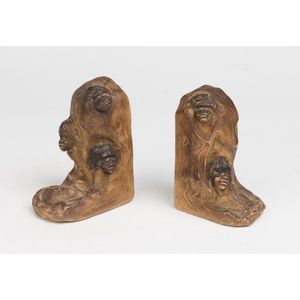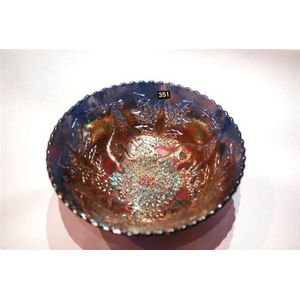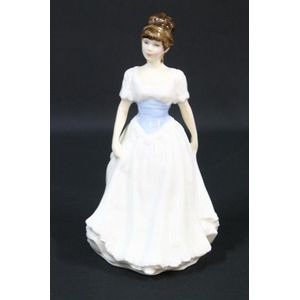Greek Key Lidded Crock by Luke Adams
You must be a subscriber, and be logged in to view price and dealer details.
Subscribe Now to view actual auction price for this item
When you subscribe, you have the option of setting the currency in which to display prices to $Au, $US, $NZ or Stg.
- Stoneware Crocks - Stoneware crocks have a long history dating back to the 17th century in Europe. They were first made by German potters in the Rheinland region, and were known for their durability and resistance to thermal shock. These early stoneware crocks were typically made from a mixture of clay, feldspar, and flint, and were fired at high temperatures to make them strong and non-porous.
The popularity of stoneware crocks quickly spread to other parts of Europe and eventually to America, where they were used by early settlers for food storage and preservation. They were particularly popular in the colonial period, where they were used for pickling and preserving food, as well as for fermenting and storing beverages like beer and cider.
During the 19th century, stoneware crocks became even more popular in America, as they were used in the growing industry of commercial food preservation. Many potteries were established in the United States, making stoneware crocks for commercial use and for households.
Stoneware crocks remained popular throughout the 20th century, but with the advent of modern food preservation methods, their use has diminished. However, they are still used today by many people who prefer traditional methods of food preservation and fermentation. - Greek Key Pattern - The Greek key pattern is a decorative design that consists of continuous interlocking vertical and right-angled lines that form a repeating motif. It is also known as "Meander" or "Greek fret." The pattern is thought to have originated in ancient Greece, where it was used in various decorative arts, such as pottery, metalwork, and architectural elements. The Greek key design is widely used in a variety of contexts, including classical architecture, decorative arts, furniture, interior design and textiles. The pattern is considered timeless and classic, and its geometric simplicity makes it a popular choice for designers in many different fields.
This item has been included into following indexes:
Visually similar items

William Ricketts (1898-1993). A pair of glazed earthenware bookends relief moulded with Aboriginal children's faces, incised Wm Ricketts 1945, 15 cm high

Amethyst Carnival glass bowl, 'Stag', 18 cm diameter

A pair of sterling silver serving spoons, Goldsmiths & Silversmiths Co Ltd, London, 1912 length 27 cm Wt 175 grams

A Royal Doulton 'Melody' dancer figurine, exclusively for Collector's Club, HN4117, height 14 cm
